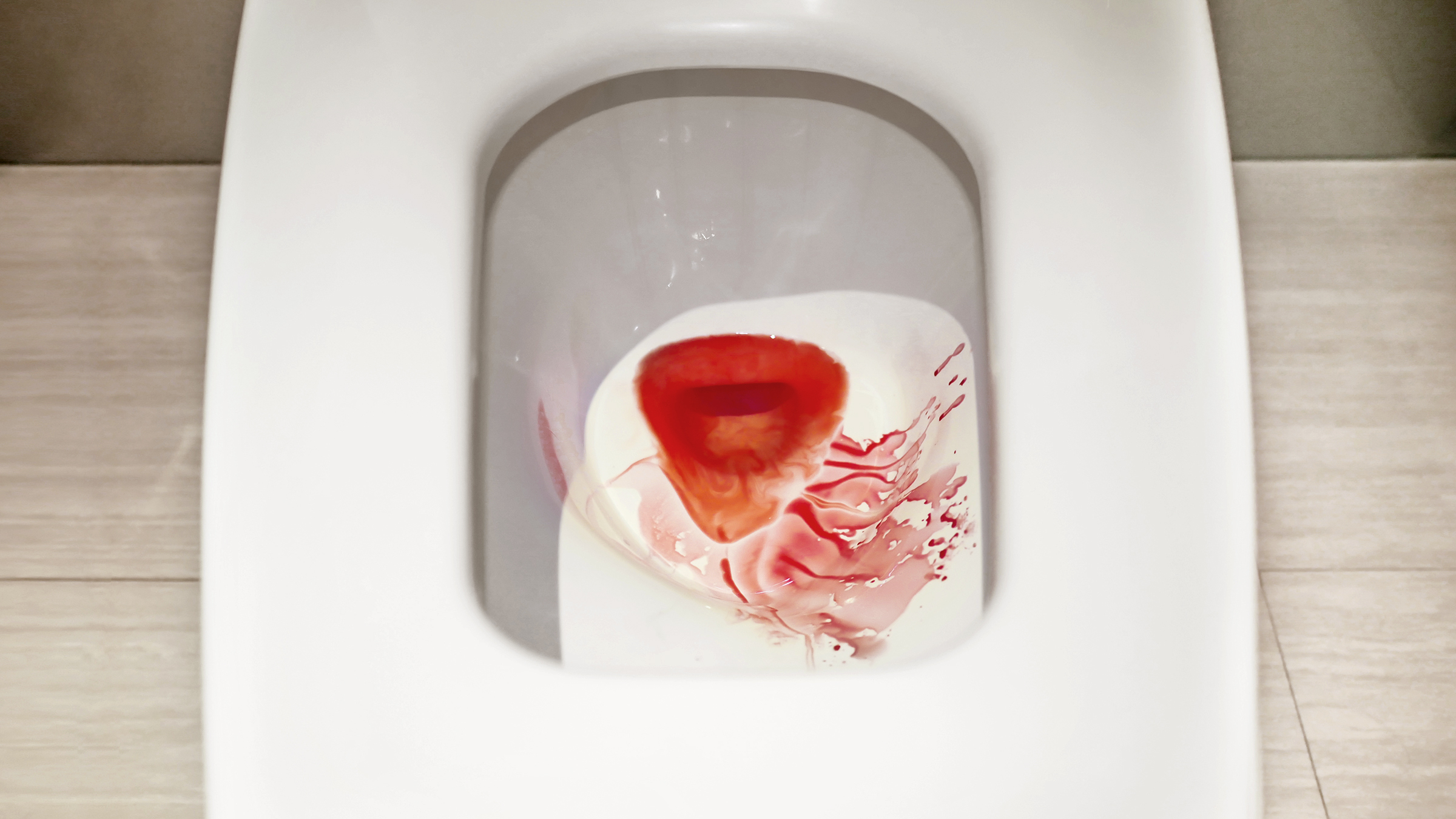Seeing blood in your urine after taking Cialis is a serious matter requiring immediate medical attention. Do not delay; contact your doctor or seek emergency care.
While Cialis generally doesn’t cause hematuria (blood in the urine), certain underlying conditions can be exacerbated by its use. For example, pre-existing kidney or urinary tract issues might manifest as blood in the urine. The medication itself doesn’t directly cause the bleeding; instead, it can potentially worsen pre-existing problems.
Several factors contribute to this risk. Dehydration, for instance, can concentrate urine, increasing irritation and potentially causing bleeding. Prostate problems, another common concern in men who use Cialis, can also lead to hematuria. Therefore, a thorough medical evaluation is absolutely necessary to determine the root cause.
Your doctor will likely conduct a physical exam and order tests, such as a urinalysis and possibly imaging studies, to pinpoint the problem. Openly discussing your medical history, including all medications you’re taking, is vital for accurate diagnosis and treatment planning. Be prepared to describe the frequency and severity of the blood in your urine, as well as any accompanying symptoms, such as pain or discomfort.
Remember, prompt medical intervention is key to addressing the issue effectively and preventing potential complications. Self-treating is strongly discouraged; seek professional medical guidance immediately.
- Cialis and Blood in Urine: Understanding the Potential Connection
- Understanding the Normal Functions of the Urinary Tract
- Kidney Function: Filtration and Reabsorption
- Bladder Storage and Elimination
- Maintaining Urinary Tract Health
- Cialis’s Mechanism of Action and Potential Side Effects
- Common Side Effects
- Rare but Serious Side Effects
- Consult Your Physician
- Recognizing the Symptoms of Hematuria (Blood in Urine)
- Possible Causes of Hematuria Beyond Cialis Use
- When to Seek Immediate Medical Attention
- Urgent Situations Requiring Immediate Medical Care
- Less Urgent, But Still Important, Signs
- Seeking Professional Advice: Diagnosing and Managing the Issue
Cialis and Blood in Urine: Understanding the Potential Connection
Finding blood in your urine after taking Cialis warrants immediate medical attention. While Cialis itself doesn’t directly cause blood in urine (hematuria), it’s crucial to rule out any underlying conditions exacerbated or revealed by the medication.
Cialis, a medication for erectile dysfunction and benign prostatic hyperplasia (BPH), can sometimes indirectly contribute to hematuria. For example, if you have an undiagnosed urinary tract infection (UTI) or kidney stones, Cialis might increase blood pressure or strain the urinary system, making existing conditions more noticeable. The increased blood flow associated with Cialis might also reveal pre-existing, minor bleeding issues in the urinary tract that were previously asymptomatic.
Underlying conditions like kidney disease, prostate cancer, or bladder stones can cause hematuria, and Cialis might simply bring these pre-existing problems to light. Other medications you take concurrently could also interact with Cialis, leading to complications.
Therefore, if you experience blood in your urine after taking Cialis, contact your doctor immediately. They will perform a thorough evaluation, including a urinalysis and potentially further tests, to determine the cause. They’ll consider your medical history, other medications you’re taking, and your symptoms to provide an accurate diagnosis and appropriate treatment.
Delaying treatment could lead to serious health consequences. Prompt medical attention ensures swift identification and management of the underlying cause, leading to better health outcomes.
Understanding the Normal Functions of the Urinary Tract
Your urinary tract efficiently removes waste products from your blood, maintaining your body’s fluid balance. This system comprises the kidneys, ureters, bladder, and urethra. The kidneys filter approximately 120 quarts of blood daily, producing about 1-2 quarts of urine. This urine contains waste like urea and creatinine. The ureters, two slender tubes, transport this urine from the kidneys to the bladder.
Kidney Function: Filtration and Reabsorption
The kidneys’ filtration process involves removing waste and excess water while retaining essential nutrients like glucose and electrolytes. This occurs in tiny filtering units called nephrons. Reabsorption then selectively returns necessary substances back into the bloodstream. The precise balance of filtration and reabsorption is crucial for maintaining blood pressure and overall health. Hormones like antidiuretic hormone (ADH) regulate this process, influencing urine concentration.
Bladder Storage and Elimination
The bladder, a muscular sac, stores urine until it’s eliminated. Its smooth muscle walls expand to accommodate increasing volume. When the bladder is full, stretch receptors send signals to the brain, triggering the urge to urinate. The urethra, a tube leading from the bladder to the outside of the body, then allows for urine expulsion. The process of urination is controlled by both voluntary and involuntary muscles.
Maintaining Urinary Tract Health
Adequate hydration is key to optimal urinary tract function. Drinking sufficient water helps flush waste products and prevents urinary tract infections (UTIs). A healthy diet, regular exercise, and prompt medical attention for any abnormalities significantly contribute to a well-functioning urinary system.
Cialis’s Mechanism of Action and Potential Side Effects
Cialis (tadalafil) works by relaxing muscles in the blood vessels and increasing blood flow to the penis. This allows for improved erectile function. The drug inhibits a specific enzyme, phosphodiesterase-5 (PDE5), which is responsible for breaking down cyclic guanosine monophosphate (cGMP), a crucial molecule for achieving and maintaining an erection.
Common Side Effects
Like all medications, Cialis can cause side effects. The most common include headache, flushing, nasal congestion, and indigestion. These are usually mild and temporary. Less frequent but still possible side effects involve back pain, muscle aches, and vision changes (such as changes in color perception or blurred vision).
Rare but Serious Side Effects
In rare instances, more serious side effects can occur. These include prolonged erection (priapism), which requires immediate medical attention. Sudden vision loss or hearing loss are also potential, albeit uncommon, side effects that necessitate immediate medical evaluation. Individuals with pre-existing heart conditions should discuss potential risks with their doctor before using Cialis. The table below summarizes these potential side effects.
| Side Effect | Frequency | Action |
|---|---|---|
| Headache | Common | Usually resolves on its own; over-the-counter pain relievers may help. |
| Flushing | Common | Drink plenty of fluids. |
| Nasal Congestion | Common | May improve with time. |
| Indigestion | Common | Avoid heavy meals before taking Cialis. |
| Priapism | Rare | Seek immediate medical attention. |
| Vision Loss/Hearing Loss | Rare | Seek immediate medical attention. |
Consult Your Physician
This information is for educational purposes only and should not be considered medical advice. Always consult your doctor before starting any new medication, especially if you have pre-existing health conditions or are taking other medications. Your doctor can help assess your individual risk factors and determine if Cialis is the right treatment option for you.
Recognizing the Symptoms of Hematuria (Blood in Urine)
Notice your urine appearing red, pink, or cola-colored? This could indicate hematuria, the presence of blood in your urine. Sometimes, the blood might not be visible to the naked eye; a urine test might reveal microscopic traces.
The color change isn’t the only sign. You might experience pain or burning during urination. Clots in your urine are another potential symptom, appearing as jelly-like substances. Frequency changes, such as needing to urinate more often or urgently, also warrant attention.
Underlying conditions such as kidney stones, urinary tract infections, and bladder cancer can cause hematuria. Prostate problems in men can also contribute. Certain medications and strenuous exercise might be factors, too.
If you observe any of these symptoms, consult your doctor immediately. Early diagnosis and treatment are key to managing the underlying cause and preventing complications. A simple urine test can help determine the presence of blood and guide further investigations.
Don’t delay seeking medical attention. Prompt action leads to better outcomes.
Possible Causes of Hematuria Beyond Cialis Use
Blood in your urine (hematuria) can stem from various sources unrelated to Cialis. Kidney stones frequently cause this, resulting from mineral buildup irritating the urinary tract. Infection, particularly urinary tract infections (UTIs), also commonly leads to hematuria due to inflammation and damage.
Prostate problems, such as an enlarged prostate or prostate cancer, can also cause blood in urine. The prostate’s proximity to the urethra means even minor irritation can lead to bleeding. Bladder cancer is another serious possibility; bleeding is a key symptom, prompting immediate medical attention.
Certain kidney diseases, like glomerulonephritis, inflame the kidney’s filtering units, causing blood to leak into the urine. Trauma to the urinary tract, from injury or surgery, is another potential cause. Finally, strenuous exercise can temporarily increase blood pressure in the kidneys, sometimes resulting in microscopic hematuria.
If you experience hematuria, schedule an appointment with your doctor. A thorough examination, including a urinalysis and potentially imaging studies, will help identify the underlying cause and guide appropriate treatment.
When to Seek Immediate Medical Attention
If you notice blood in your urine after taking Cialis, contact a doctor immediately. Don’t delay.
Urgent Situations Requiring Immediate Medical Care
- Severe pain: Experience of significant pain in your lower abdomen, back, or side alongside blood in urine demands immediate attention.
- Difficulty urinating: Inability to urinate or painful urination accompanying blood requires prompt medical evaluation.
- Large amounts of blood: Passing large amounts of blood in your urine is a serious sign and needs immediate assessment.
- Changes in urine color: A sudden, dramatic change in your urine color, particularly darkening or becoming tea-colored, warrants immediate medical attention.
- Fever or chills: Development of fever or chills together with blood in your urine indicates a possible infection requiring urgent treatment.
- Signs of allergic reaction: If you experience hives, swelling, difficulty breathing, or any other symptoms of an allergic reaction after taking Cialis, seek immediate medical help. This is life-threatening.
Less Urgent, But Still Important, Signs
- Small amounts of blood in your urine that persist for more than a day or two, even without other symptoms, should be checked by a doctor.
- Any unexpected changes in your urinary habits or general health after taking Cialis should be reported to your physician.
Remember, early detection can improve outcomes. Don’t hesitate to contact your healthcare provider if you have any concerns.
Seeking Professional Advice: Diagnosing and Managing the Issue
Seeing blood in your urine after taking Cialis requires immediate medical attention. Don’t delay; contact your doctor or seek emergency care.
Your doctor will likely conduct a thorough examination, including:
- A physical exam to assess your overall health.
- A complete medical history review, including medications you’re taking.
- Urine tests to analyze the blood and identify any underlying conditions.
- Blood tests to check your kidney function and assess for other potential causes.
- Possibly imaging tests like an ultrasound or CT scan to visualize your urinary tract.
Several factors contribute to blood in urine (hematuria), and Cialis is only one potential contributor. Other causes include:
- Kidney stones
- Urinary tract infections (UTIs)
- Prostatitis (inflammation of the prostate gland)
- Bladder cancer
- Kidney disease
Diagnosis depends on the test results and your specific circumstances. Your doctor will explain the findings and discuss the appropriate treatment plan. This might include:
- Medication to manage underlying conditions, like antibiotics for a UTI.
- Lifestyle adjustments, such as increased fluid intake.
- Surgery to remove kidney stones or address other structural issues.
- A change in medication, potentially including discontinuation of Cialis if it’s determined to be a factor.
Following your doctor’s instructions is critical for successful management and preventing complications. Regular follow-up appointments allow monitoring of your progress and addressing any new concerns. Open communication with your healthcare provider ensures you receive the best possible care.










